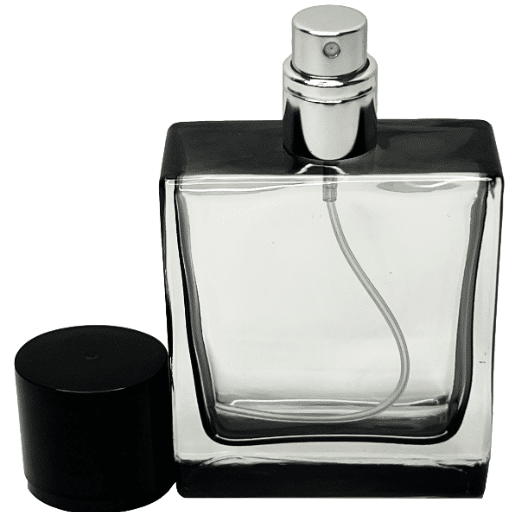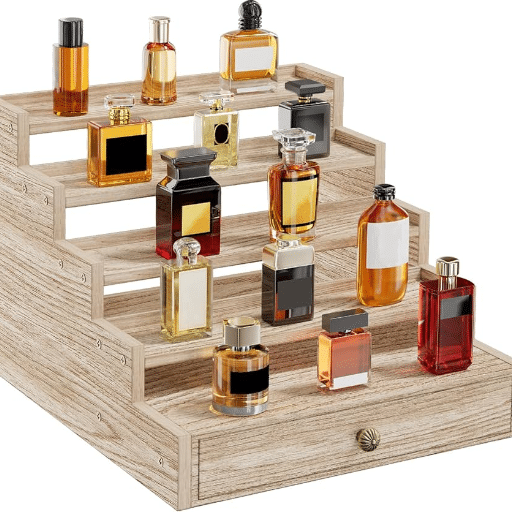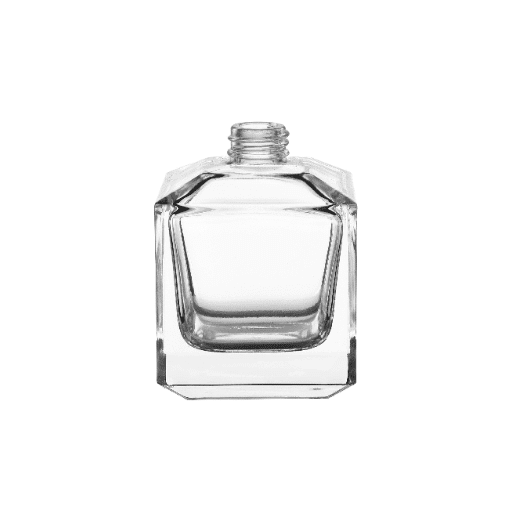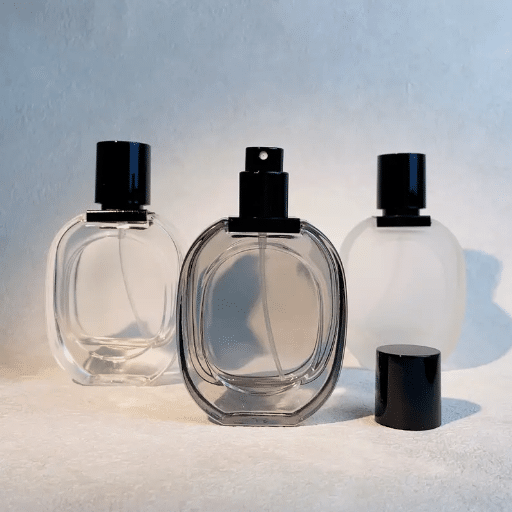Procurement packaging in the perfume industry is likely to face a dilemma that few industries encounter: balancing economic efficiency with environmental conservation. As the average consumer becomes more aware of environmental issues, there is a greater demand for ‘green’ packaging options that do not sacrifice the attractiveness of design or the cost that comes with it. This article examines the methods companies use to produce their commodities for the marketplace while maintaining a profit margin. With the Adopting approach, we will focus on crucial issues such as the type or composition of the materials and how to work with the suppliers, seeking ways of solving the issues pragmatically described by the challenges each brand faces, especially in perfumes, how best to manage the three factors of cost, sustainability, and utility tested in equilibrium. Keep reading to see how new approaches to procurement can challenge the existing conceptualisation of packaging in the margins of this field.
Understanding the Perfume Packaging Procurement Process
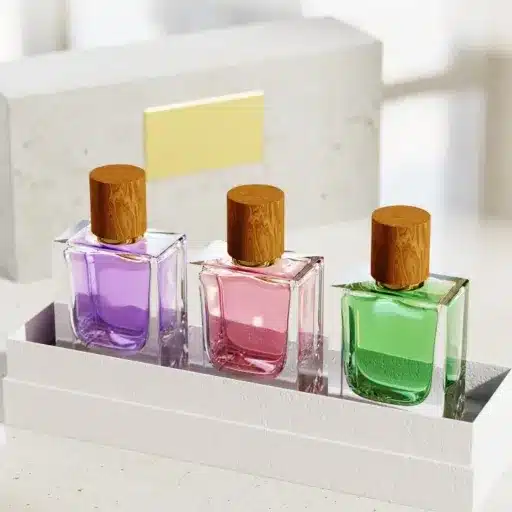
The procurement of packaging for fragrance products requires a consideration of the types of packaging that are suitable for the brand in terms of style, functionality, and sustainability. Suppliers must be assessed based on reliability and quality, and the costs of the materials must be negotiated to ensure staying within allocations and meeting the relevant industry standards, if applicable. There is an emphasis on using innovative components, design, and production of environmentally focused packages, as this will cater to the enhanced requirements of users and market developments in general. To assure delivery of quality items on time, it is necessary to coordinate efforts with vendors and have a transparent analysis mechanism in place.
Overview of the Perfume Packaging Procurement Lifecycle
The procurement cycle for packaging cosmetics follows a specific sequence of stages that are necessary for achieving optimal results and a competitive edge. Stage one involves market studies and supplier search, where enterprises assess the current state of fashion, developments in materials, and supply chain capabilities. Vendors are then screened and selected based on factors such as quality, social responsibility, operational volume, and other relevant criteria. Design & development considerations focus on customizing, aesthetic, and functional aspects of brand enhancement, while also ensuring the application of green materials. Cost adjustments and contracting will follow this meeting, ensuring that costs do not exceed budgets and alliances are not compromised. However, the last step involves quality control, ensuring that the product is delivered on time, in volume, and of high quality, thereby addressing these aspects. Working through all the elements in this order ensures proficient operations and maintains the institution’s stability as consumer expectations shift.
Key Stakeholders in Perfume Packaging Procurement
👨💼 Procurement Managers
Managing suppliers’ ratings, contracts, and costs for packaging to make sure it can be procured efficiently and with the set brand strategies.
🎨 Design Teams
Concern on improving the visual appeal and function of the respective packaging to try and project the brand to the audience effectively.
🔍 Quality Assurance Specialists
Evaluate the packaging materials and end products for conformance to quality expectations and industry standards.
🏭 Suppliers and Manufacturers
Raw materials, wares, or rolls, packaging, parts, or ready-to-use products are all items that should be provided and required in the terms.
🚚 Logistics and Supply Chain Coordinators
They handle packaging orientation, storage, and orders to ensure a smooth flow of goods for production purposes.
📢 Marketing Teams
They are responsible for the package design and contents, i.e., advertisements within the package, as this is a part of the larger marketing initiative.
⚖️ Industry Compliance Executives
Ensure that all packaging retains the integrity of the environment while also satisfying specific rules and stipulations regarding more sustainable practices, as well as its labeling.
🌱 Environment Consultants
Help utilize new, efficient materials and practices to address the surge in demand for greener procurement packaging options.
Steps to Simplify the Perfume Packaging Procurement Process
-
1
Define Packaging RequirementsThoroughly analyze the product’s packaging needs, encompassing size, materials, design elements, and protective requirements. Document these specifications so that all stakeholders agree.
-
2
Research Packaging SuppliersLook for and evaluate reputable suppliers specializing in perfume packaging. Consider their offerings in terms of quality, price, lead times, and the basis of custom packaging requirements.
-
3
Verify Regulatory ComplianceEnsure the packaging materials and design chosen are compliant with all relevant industry regulations, environmentally oriented, and legally compliant, including label and sustainability requirements.
-
4
Request Samples and PrototypesRequest samples or prototypes from the suppliers for checking the quality of packaging and its suitability for the product. Check the samples against the specifications defined earlier.
-
5
Optimize Design for ProductionWork with suppliers and design teams to determine a packaging design that suits the product, generalizes its functionality from small to large scales, and in the process, seeks to minimize waste.
-
6
Negotiate Contracts and PricingClearly state in the contract with the supplier the details of order volumes, the delivery schedule, terms of payment, as well as contingency plans in case of a delay or defect in the order. Aim to negotiate the best price possible, considering, however, that price should never be compromised in terms of quality.
-
7
Quality ControlEstablish quality control procedures for monitoring throughout and after the packaging stages. A quality inspector should repeatedly check the packaging standard to ensure that the packaging meets the agreed-upon requirements.
-
8
Logistics and Inventory ManagementDevelop efficient procedures for delivering packaging materials to prevent delays. Meanwhile, inventory management needs to be optimized so that a fair balance can be established between the availability of supply upon request and the tolerable application of storage restrictions.
-
9
Monitor and Review Supplier PerformanceEvaluate suppliers’ performances continuously on key parameters, including delivery times, defect levels, and overall quality. Maintain open lines of communication to address issues and negotiate improvements.
-
10
Integrate Sustainability into OperationsConduct ongoing assessments of the viability of using sustainable materials and reducing waste throughout the procurement process. Implement all criteria that support the environmental impact objectives.
Developing an Effective Perfume Procurement Strategy
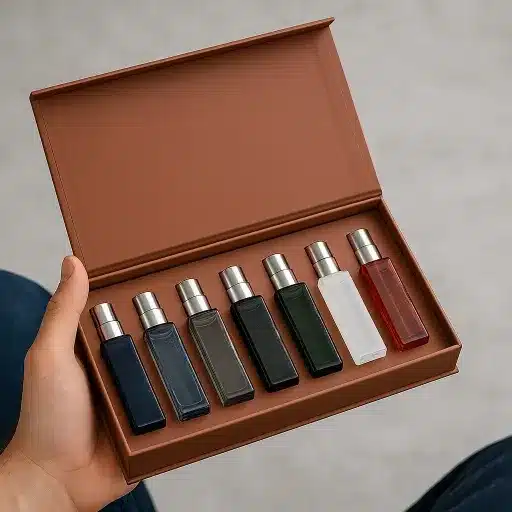
🔍 Market Research and Sourcing
Conduct in-depth market research to identify reliable suppliers specializing in high-quality fragrance materials. Consider supplier reputation, product compatibility with brand standards, and pricing.
✅ Supplier Qualification
Suppliers should be thoroughly vetted under conditions that test their ability to perform work in accordance with quality standards and regulations, also considering sustainability conditions.
🎯 Quality Assurance
Develop quality assurance systems to perform quality control measures that monitor the raw materials for consistency in purity, smell, and batch uniformity.
💰 Cost Optimization
Apply principles of strategic sourcing and volume purchasing to obtain the best price, while ensuring that it meets the required quality standards.
📋 Contract Management
Negotiate legally clear and binding contracts with suppliers that state clear terms with respect to delivery dates, payment, and the desired quality.
📊 Data-Driven Decision-Making
Dig up supplier performance data using procurement software and analytics; make sure to track costs and optimize inventory management.
Aligning Business Goals with Perfume Packaging Procurement
Aligning business goals for procuring perfume packaging requires a more strategic approach that supports both branding and operational efficiency. Packaging must effectively convey the brand identity, striking a balance between ample aesthetic appeal and a premium unboxing experience for consumers. However, procurement strategies must remain cost-effective and sustainable in light of other business objectives, such as reducing costs and promoting environmental awareness. Packaging procurement should be a seamless integration of branding, logistics, and sustainability, achieved by working with suppliers who deliver on time without compromising on standards and materials that are not only quality-based but also eco-friendly.
Identifying Cost Savings in Perfume Packaging
The cost-cutting analysis extends to perfume packaging, focusing on streamlining the selection of materials to enhance production efficiency and foster better supplier relationships. Using lightweight, recyclable materials is more cost-effective for manufacturing and shipping, without compromising quality. Working with suppliers and purchasing in bulk or through long-term contracts guarantees the best price. On the marketing side, I conduct a supply chain process analysis to prevent duplication and verify production for waste, enabling us to achieve cost and environmental benefits.
Integrating Sustainability into the Perfume Procurement Strategy
The concept of sustainability within perfume procurement must encompass, among others, a comprehensive lifecycle approach to raw materials. From anything that might pose less threat to an ingredient’s conscience, where one considers the environmental impact of it all, from sourcing to disposal, it might be inferior to an alternative that poses less threat to the conscience. Perhaps it used to be the sourcing. The production of sustainable materials, such as certified essential oils harvested with consideration for their ecological footprint, is necessary. In addition, the use of blockchain to create a transparent supply chain significantly improves traceability, hence forcing the adherence to environmental and ethical standards. A big data analytics and AI approach can further predict demand with an extremely high degree of precision, driving procurement away from overproduction and waste. In concert, such initiatives would create procurement that is both environmentally oriented and profitable.
Choosing the Right Packaging for Perfume
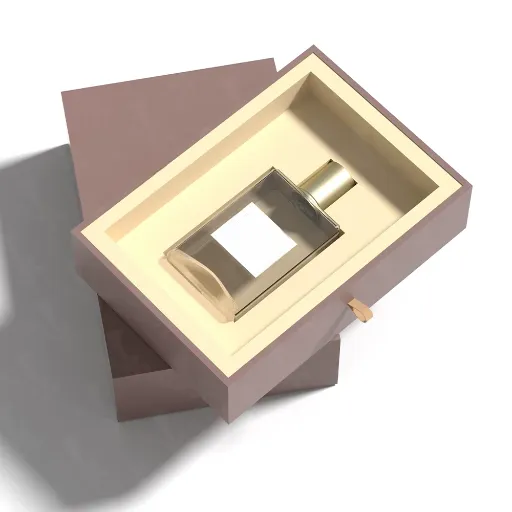
Packaging selection for a perfume must strike a balance between aesthetics, functionality, and sustainability. Classic materials like glass would maintain the fragrance integrity and provide a premium feel. It should be designed to reflect the brand’s identity, so that consumers feel a positive association with it. Functional criteria focus on the convenience of use and protection, such as avoiding leaks or exposure to harmful UV radiation. From a sustainability perspective, the packaging can be made from recycled materials or incorporate recycled content.
Factors to Consider When Selecting Perfume Packaging
| Factor | Description |
|---|---|
| Material Quality and Durability | The packaging material should be hard enough to resist external factors that may lead to breakage, contamination, or penetration by UV rays, which can actually degrade the perfume’s scent. |
| Aesthetic Appeal | The packaging design and finish should align with the brand image to convey a complete sense of luxury, thereby capturing the attention of consumers and influencing them to make a purchase. |
| Functionality | It should not be difficult to operate and should feature a reliable spray mechanism with characteristics such as strong sealing against leakage and easy handling. |
| Sustainability | Preference is given to packaging materials that are environmentally benign, recyclable, or reusable, thereby aligning the brand with environmental sustainability and appealing to environmentally conscious consumers. |
| Cost-Effectiveness | While not compromising design or quality standards, the packaging solution must be economically viable to achieve profitability in terms of expenditure. |
Exploring Custom Packaging Solutions for Perfume
Since custom packaging is a service given for perfumes, the aim is to ensure functionality. At the same time, aesthetics are closely tied to the notion of luxury and brand identity. High-quality materials, such as glass or metal, and design elements like embossing, color matching, or a distinctive bottle shape specific to the product, are among the key considerations. Since keeping the product fresh is essential for perfume, manufacturers must use airtight packaging; a spray nozzle also serves a utilitarian purpose. Refillable packaging or recyclable alternatives would be preferable from an eco-friendly perspective. Effective gatherings of customized packaging combine functionality and style to enhance the consumer’s experience.
Evaluating Packaging Suppliers for Perfume
Evaluating packaging suppliers for perfume requires a customer-centric approach, which is imperative to specify all necessary features to ensure quality, reliability, and alignment with brand objectives. First, evaluate the supplier’s knowledge of perfume packaging production and their record of accomplishment, if available. If you are interested, please request some samples to review the material’s durability, design intricacies, and functionality. Certifications confirming that the packaging can be customized to your specifications, including unique designs, sustainable choices, or branding needs such as logos or embossing, are also necessary. Furthermore, verify lead times, production capabilities, and scalability to ensure they align with your own timeline and growth aspirations. The supplier must conform to industry standards concerning safety, sustainability, and product integrity. Request price quotations and the supplier’s terms detailed enough to guarantee the partnership will satisfy all quality and budget criteria.
Exploring Sustainable Packaging Solutions for Perfume
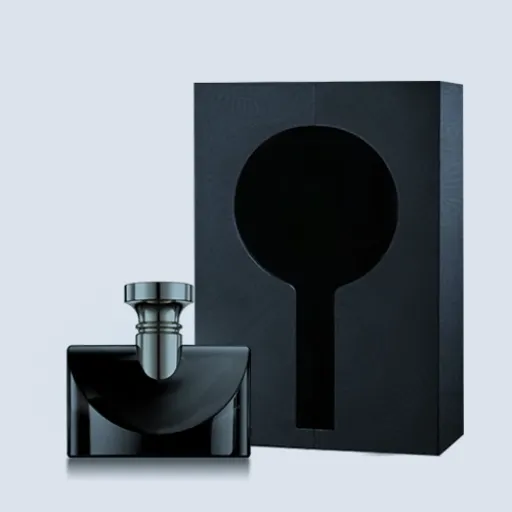
Sustainable packaging solutions for perfume must prioritize eco-friendly materials, such as glass, recycled paper, or biodegradable plastic, while considering suppliers who practice aspects of sustainable manufacturing and are certified with ISO 14001 or hold an FSC certification for responsibly sourced materials. Might also consider packaging designs that are minimalist, refillable, or reusable to minimize waste while maintaining elegance and utility. The environmental impact of transportation should also be evaluated; however, the packaging should effectively communicate the sustainability initiatives of your brand without compromising aesthetics or product integrity.
Benefits of Sustainable Packaging in the Perfume Industry
🌍
Environmental Impact Reduction
Sustainable packaging limits the waste created and reduces the use of non-recyclable materials, leading to slower contributions to landfills and a somewhat reduced carbon footprint for the industry.
📈
Enhanced Brand Reputation
Eco-friendly actions speak volumes about corporate responsibility and foster trust and loyalty among environmentally conscious consumers, ultimately enhancing the brand’s marketability.
💰
Cost-Effectiveness
Lightweight, recycled, and biodegradable materials can sometimes be cheaper to produce, which in turn reduces shipping costs, making this a cost-effective alternative to conventional packaging options.
📊
Increased Consumer Demand
Consumers today are aware of environmental issues, so promoting a product with sustainable packaging has become an advantage in answering the increasing call for green products.
⚖️
Compliance with Regulations
Sustainable packaging ensures adherence to environmental regulations and standards, effectively preventing on-the-spot penalties and opening up trade opportunities in regions characterized by stringent regulatory frameworks.
Innovative Materials for Eco-Friendly Perfume Packaging
-
♻️
Recycled GlassRecycled glass is highly sustainable as it uses less raw material and energy for its production. Plus, it has the best look available for perfume bottles.
-
🌱
Biodegradable PlasticsThese are made from natural sources, such as cornstarch or sugarcane. These plastics decompose under composting conditions and do not cause any long-term environmental hazard.
-
📄
FSC Certified PaperboardFSC-certified paperboard is responsibly sourced and can therefore be used for outer packaging, such as boxes, thereby ensuring sustainability and trust among customers.
-
⚡
AluminumAluminum is a lightweight yet strong material that is considered eco-friendly for use in perfume containers or caps. These materials uphold both practicality and sustainability.
-
🎋
Plant-Based MaterialsPlant materials like bamboo or cork utilize renewable resources for caps and decorative purposes, enhancing biodegradability while imparting a unique texture and appearance.
With the aid of these materials, brands can significantly reduce their carbon footprint while accommodating consumer preferences for green products.
Balancing Sustainability with Cost-Effectiveness
The balance between sustainability and cost efficiency requires a thorough evaluation of production methods, materials, and long-term economic considerations. While sustainable materials like post-consumer recycled plastics or plant-based alternatives may be initially costly, those that are likely to be advantageous include decreased waste management costs and improved brand recognition, which can influence customer purchasing behavior. Efficient production techniques, such as automating manufacturing or optimizing material use, can mitigate the cost difference associated with shifting towards sustainable alternatives.
Secondly, economies of scale will play a vital role. Companies, for example, can negotiate better prices with suppliers by committing to bigger orders of biodegradable or recycled material. The application of lifecycle assessment tools enables firms to identify cost-saving opportunities across various stages of the product life cycle, including sourcing, production, distribution, and disposal. Balancing these considerations is a strategic decision that centers on investing in opportunities that yield both environmental and economic returns in the long run.
Trends in Custom and Tailored Packaging for Perfume
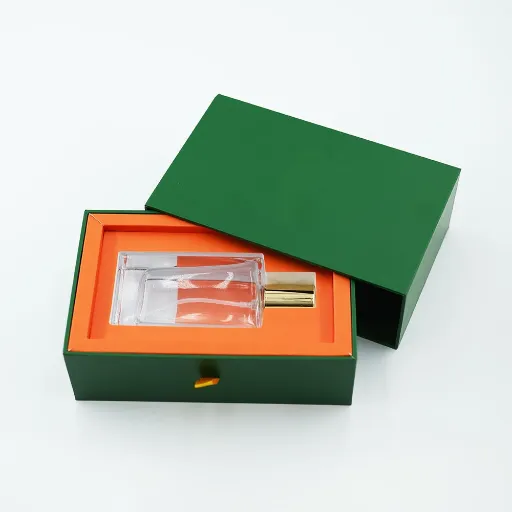
Custom creation and tailor-made perfume packaging have long experienced an evolving trend, driven by consumer tastes for personalization, sustainability, and alternative premium aesthetics. Brands are increasingly gaining from eco-friendly materials and processes, including recycled glass and biodegradable elements, as a testament to their environmental initiatives. Conversely, the sense of luxury and exclusivity is conveyed through innovative design methods, including embossing, intricate patterns, and unconventional shapes. Other options for innovative packaging are also gaining traction, including QR codes and NFC integration, which afford customers interactive experiences and enhanced traceability. These demonstrate how the industry demands both capability and beauty while considering the expectations of environmental and technological nature.
Current Trends in Perfume Packaging Designs
According to recent data coupled with expert reviews, a general theme underlying modern perfume packaging solutions is sustainability, minimalism, and personalization. One of the most notable trends remains the increasing use of eco-friendly materials, such as recycled glass, biodegradable plastics, and refillable containers, in response to consumer demand for sustainable practices. Complementing them are minimalist designs that emphasize sleek lines, faint branding, and neutral colors-aesthetic cues widely associated with sophistication and timeless elegance. The element of personalization enables brands to combine advanced digital printing and customization technologies, creating products that allow packaging to cater to every individual’s taste. These factors, together with the evolving and innovative interactive packaging, create genuine frontiers in perfume packaging design, such as augmented reality experiences and blockchain technology for authenticity verification.
Adapting to Consumer Preferences in Packaging
Following consumer preferences in packaging means prioritizing sustainability, functionality, and beauty. Consumers are increasingly demanding the use of environmentally friendly materials that minimize adverse environmental effects, such as biodegradable or recyclable materials. Functionality must also be considered so that representatives of the end-user can practically carry out storage or transportation. Aesthetics remain an essential factor because an attractive design can significantly influence purchasing decisions and reinforce brand recognition. Packaging strategies that align with consumer preferences will enable companies to meet consumer expectations and establish a strong market presence.
Future Innovations in Perfume Packaging Solutions
The future of perfume packaging will, in all likelihood, be carved out by advancements in sustainable materials, technological integration, and customization. New eco-friendly materials with a promising future will be the biodegradable polymers or plant-based alternatives, in a quest for brands looking to minimize their environmental impact. Innovative packaging, including RFID tags or QR codes embedded in packaging materials, is now promoted to keep customers engaged in the product experience, assert the authenticity of a product, and open up compelling brand experiences through an augmented reality application. Improvements in 3D printing and customization also enable consumers to create genuinely bespoke packaging designs tailored to their priorities, thereby building a stronger connection with the brand. This convergence of emerging technologies aligns with upcoming market trends for sustainable, utility-driven, and fashionably appealing packaging solutions, all while meeting the requirements of customer interaction and product differentiation.
Reference Sources
- How Sustainable Packaging is Transforming the Fragrance Industry – Discusses reducing waste, eco-friendly materials, and recyclability in fragrance packaging.
- Sustainable Perfume Packaging Solutions for the Eco-Conscious Fragrance Brand – Explores refillable bottles and biodegradable materials for sustainable perfume packaging.
- How Sustainable Packaging Helps Your Perfume Brand – Highlights ethical production, environmentally aware packaging, and societal impacts on fragrance sustainability.
- Perfume Packaging Statistics 2025 – Focuses on refillable packaging solutions and their alignment with sustainability goals.
- Perfume Packaging Meets Sustainability & High Tech – Discusses material circularity, optimization, and refill/reuse strategies in award-winning perfume packaging.
Frequently Asked Questions (FAQs)
❓
What does one go through for packaging procurement?
Packaging procurement is a series of steps that procurement teams must follow to ensure the procurement of the correct materials and services for effective packaging. These include identifying materials needed for packaging, searching for potential suppliers, entering into contracts, and monitoring the delivery of supplies. A well-structured packaging procurement process enhances the resilience of the supply chain, streamlines business operations, and contributes to the overall business strategy.
❓
How can companies apply to simplify packaging procurement?
Centralized consolidation of packaging needs across different product lines helps to simplify procurement in packaging. It provides better leverage for negotiating terms with suppliers and procuring at a discounted rate. These businesses can utilize technology to track and manage orders, helping them streamline their supply-side efforts and meet customer expectations efficiently.
❓
What are the benefits of eco-friendly packaging materials?
Eco-friendly packaging materials offer numerous benefits, incurring lower environmental costs and providing better value for the brand image. As consumers increasingly prefer sustainability, eco-friendly packaging is becoming more desirable to them. By selecting their packaging materials, businesses demonstrate their commitment to responsible sourcing in the industry, ultimately fostering customer satisfaction and loyalty.
❓
How to select a packaging supplier?
Choosing a packaging supplier should involve evaluating the supplier’s ability to deliver what is requested, at a reasonable price, promptly, and using high-quality packaging materials. The supplier’s reputation in the industry and its preparedness in dealing with supply chain risks are crucial aspects one must consider. A strong rapport with the best packaging supplier can considerably simplify your packaging procurement strategy.
❓
What are some of the new trends in packaging procurement?
In general, newer trends for packaging procurement might include considerations of sustainability, customization, or technology to enhance efficiency. Many companies have been moving toward custom packaging solutions tailored to the needs of the product as well as to environmental sustainability. With recent developments in automation and data analytics, companies are really able to optimize the packaging process and also minimize transportation costs.
❓
Which are the factors that need to be considered while procuring packaging materials?
With packaging materials, consider many things such as cost, quality of materials, delivery time, and environmental impact of packaging choices. Material selection should be such that it offers adequate protection to the product and complies with regulations. Packaging expectations often significantly influence buying decisions; therefore, it is crucial to understand these expectations and tailor packaging solutions accordingly.

